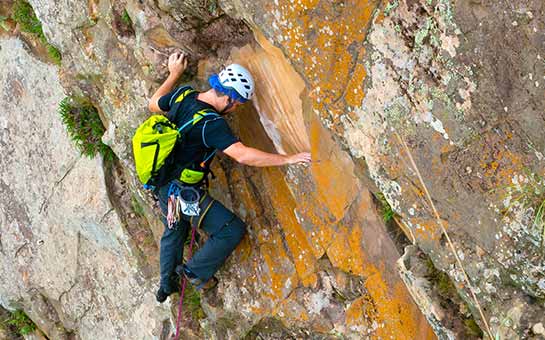Rock climbing is an adventure activity involving going up a sheer cliff or rock outcropping. Rappelling, on the other hand, is climbing down the rock formation. Together, they make an excellent adventure sport. The perils you will face while climbing up and down rock surfaces are real. That’s why rock climbers and rappelers prefer the security of rock climbing and rappelling travel insurance.
Travel Insurance for Rock Climbing and Rappelling
Rock climbing and rappelling are extreme adventure sports fraught with risk, particularly for tourists. Additionally, your general travel insurance is not likely to cover these activities. If you are planning to attempt rock climbing in your travel destination, look for rock climbing and rappelling travel insurance.
As a tourist, an unfortunate accident can make your vacation a nightmare. Getting adequate rock climbing and rappelling travel insurance is an intelligent decision. This type of insurance may cover expenses for:
- Medical facilities and hospital stays
- Transportation from the site of the accident to the hospital
- Personal accidents
- Damage/loss of baggage and climbing equipment, in some policies
- Damage/loss of cameras and other electronic gear, in some policies
Rock Climbing Basics
The main objective of this activity is to propel yourself from the ground, up a rock face, and back down again. The sport calls for specialized techniques and essential climbing equipment like extra-grip shoes, ropes, harnesses, and anchors, as well as magnesium carbonate chalk to dry out sweaty hands.
You are expected to pull your body weight up using your hands and fingers while your feet help you position yourself securely. Since your center of gravity plays a major role in rock climbing, the large leg muscles provide the needed support. The arms and shoulder muscles help with heaving the body to an upper level. Your forearm muscles and wrist joint flexibility is very important.
Rappelling is the more dangerous part of the sport of rock climbing. It uses your body weight and friction to guide a controlled descent. A completely different set of techniques—swooping down, pendulum, etc.—is used to rappel.
Risks of Rock Climbing
Exhilarating as the sport is, there is ample scope of minor and major potential accidents. There are risks of injuries that will need immediate medical assistance. Some of the most common claims include:
- Head injuries
- Torn ligaments
- Broken limbs
- Muscle tears
- Joint dislocation
- Altitude-induced illnesses
As this is an extremely physical activity that mandates excellent fitness levels, tourists may find themselves unable to handle some of the more difficult climbing routes. You will be at risk if you have made a last-minute decision to participate in this activity. If your fitness level is not up to the mark, it will going to be difficult for you. If you choose to ignore the advice of an instructor, it is highly risky for you, also. We recommend following the guidance of experienced professionals to prevent unnecessary injury. However, it is recommended to purchase travel insurance for rock climbing and rappelling even if you’re an expert climber, as accidents can always happen.
